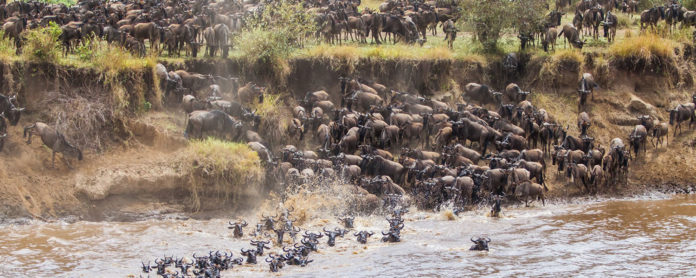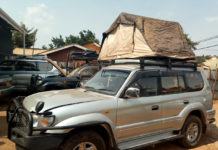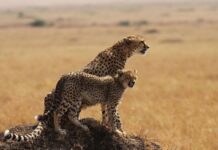The plains of East Africa host one of the world’s greatest wildlife spectacles each year: the Great Migration, featuring millions of wildebeest and hundreds of thousands of zebras and gazelles. With prey, come predators: lions, hyenas and crocodiles fix a watchful gaze in hopes of catching a cheap dinner.
For travelers, viewing the great migration is a unique opportunity to appreciate a dizzying scale of wildlife moving in lockstep across an iconic landscape. Scenes of unfiltered wildlife drama unfold along this uncontrolled journey. Some are violent, some are tender, but all are assuredly memorable.
The great migration is often presented as a clockwise circuit with wildlife cycling between Tanzania’s Serengeti in the south and Kenya’s Maasai Mara in the north, and taking place between May and December. In reality, this illustration is an oversimplification of a complex phenomenon. As with anything that moves with the rhythms of nature, the great migration circuit should be interpreted as a pattern rather than gospel.
As the grassy plains of the southern Serengeti begin to dry out, the animals move north in search of sustenance and reliable water sources. Typically, the first animals start setting out in April. Over the following months, they’ll navigate countless obstacles, from predators to river crossings. Here’s a breakdown of their tentative travel schedule, so you can plan your own.
From December to April, the wildebeest prefer the short, grassy plains of the southern Serengeti where the cropped vegetation offers predators less cover. Depending on localized rainfall, herds can be seen anywhere from the Moru Kopjes of the Central Serengeti to the slopes of the Ngorongoro Crater in the south.
Once the rainy season is over, the south and east plains of the Serengeti dry out, prompting the beginning of the Migration. This usually starts in April or May when herds begin to move north and west, although not always as one cohesive group.
July through November is traditionally considered the best time to view the great migration. Between July and August, the wildebeest move into Kenya’s Maasai Mara, crossing the Mara River in staggering numbers. For travelers, river crossings rank among the most sought-after moments of the great migration.
In a dry year, the first wildebeest can reach the Mara River as soon as early July; in a wet year, it may be as late as mid-August. If conditions are very good, grass and water are plentiful; the herds will spread out all the way from Seronera to the Mara River.
It is important to acknowledge July, August and September represent peak travel season. In order to secure your preferred lodgings and operator, you will want to book 6 to 12 months out.
In October and November, the Migration starts to work its way south into Tanzania, so there will be plenty of wildlife spotting in popular safari destinations like Kenya’s southern Maasai Mara and in northern Tanzania.
Therefore, Migration as a whole need not all pass into Kenya, and many stay behind or cross and re-cross the border areas. This carries on until October and November when they will start thinking of heading back.





